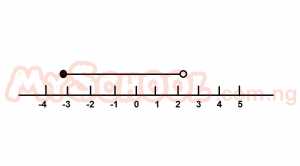The area of a parallelogram is 513cm\(^2\) and the height is 19cm. Calculate the base.
- A. 13.5cm
- B. 25cm
- C. 27cm
- D. 54cm
- E. 108cm
The volume of a cone of height 9cm is 1848cm\(^3\). Find its radius. [Take π = 22/7]
- A. 7cm
- B. 14cm
- C. 28cm
- D. 98cm
- E. 196cm
The curved surface area of a cylindrical tin is 704cm\(^2\). Calculate the height when the radius is 8cm. [Take π = 22/7]
- A. 3.5cm
- B. 7cm
- C. 14cm
- D. 28cm
- E. 32cm
The angle of a sector of a circle of radius 8cm is 240°. This sector is bent to form a cone. Find the radius of the base of the cone.
- A. 16/3cm
- B. 15/3cm
- C. 16/5cm
- D. 8/3cm
- E. 16/10cm
Solve the equation \(\frac{m}{3} + \frac{1}{2} = \frac{3}{4} + \frac{m}{4}\)
- A. -3
- B. -2
- C. 2
- D. 3
- E. 4
What must be added to the expression x\(^2\) – 18x to make it a perfect square?
- A. 3
- B. 9
- C. 36
- D. 72
- E. 81
Write as a single fraction \(\frac{1}{1 – x} + \frac{2}{1 + x}\)
- A. \(\frac{x + 3}{1 - x^2}\)
- B. \(\frac{3 - x}{(1 - x)^2}\)
- C. \(\frac{3 - x}{1 + x^2}\)
- D. \(\frac{3 - x}{(1 + x)^2}\)
- E. \(\frac{3 - x}{1 - x^2}\)
Construct a quadratic equation whose roots are \(-\frac{1}{2}\) and 2.
- A. 3x2-3x+2=0
- B. 3x2+3x-2=0
- C. 2x2+3x-2=0
- D. 2x2-3x+2=0
- E. 2x2-3x-2=0
Factorize the expression 2y\(^2\) + xy – 3x\(^2\)
- A. 2y (y + x) - 3x2
- B. (2y - x)(2y + x)
- C. (3x - 2y(x - y)
- D. (2y + 3x)(y - x)
- E. (x – y)(2y + 3x)
Evaluate \(\log_{10} 25 + \log_{10} 32 – \log_{10} 8\)
- A. 0.2
- B. 2
- C. 100
- D. 409
- E. 490
Simplify: \((\frac{16}{81})^{\frac{1}{4}}\)
- A. 8/27
- B. 1/3
- C. 4/9
- D. 2/3
- E. -4/3
The nth term of a sequence is given by 3.2\(^{n-2}\). Write down the first three terms of the sequence.
- A. 2/3, 0, 6
- B. 3/2, 3, 6,
- C. 2/3, 3, 8/3
- D. 2/3, 3/4, 6
- E. 2/3, 3, 1/3
A bricklayer measured the length of a wall and obtained 4.10m. If the actual length of the wall is 4.25m, find his percentage error.
- A. 3 9/17%
- B. 3 27/41%
- C. 15%
- D. 35 5/17%
- E. 36 24/41%
Convert 77 to a number in base two
- A. 1001 101
- B. 111001
- C. 100110
- D. 10101
- E. 10011

If x varies over the set of real numbers, which of the following is illustrated in the diagram above?
- A. -3
- B. -3≤x<2
- C. -3
- D. -3≤x≤2
- E. x≥2
Simplify (\(\frac{3}{4} + \frac{1}{3}) \times 4\frac{1}{3} \div 3\frac{1}{4}\)
- A. 1/2
- B. 13/12
- C. 10/9
- D. 17/12
- E. 13/9
Let U = {1, 2, 3, 4}, P = {2, 3} and Q = {2, 4}. What is (P∩Q)’?
- A. (1, 2, 3)
- B. (1, 3, 4)
- C. (2, 3)
- D. (1, 3)
- E. (1, 4)


